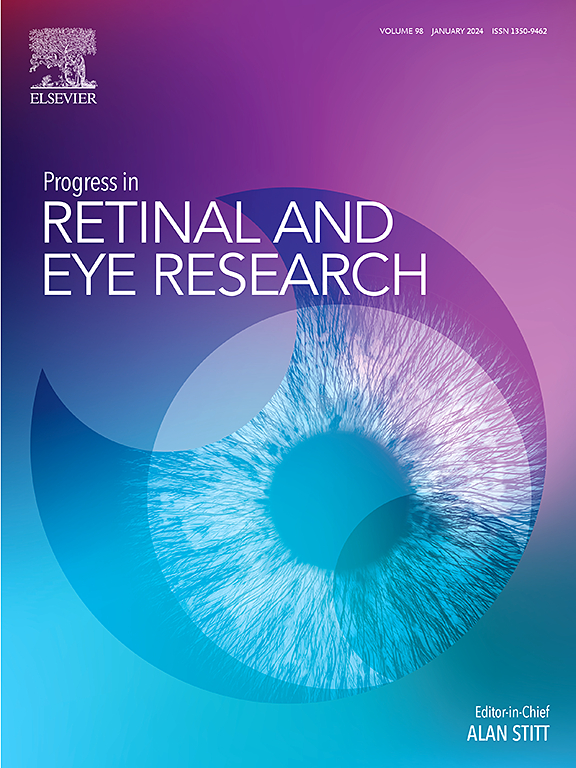Glands of Moll: history, current knowledge and their role in ocular surface homeostasis and disease
IF 18.6
1区 医学
Q1 OPHTHALMOLOGY
引用次数: 0
Abstract
Over the last 20 years, research into the Meibomian glands of the eyelids has increased exponentially and is now widely recognized as a field of research. It is all the more astonishing that knowledge about another type of gland in the eyelids, the Moll glands or ciliary glands, has almost stagnated and there has been little to almost no progress, even though this type of gland as a whole takes up a relatively large volume in the upper and lower eyelids. There is not much information about the namesake Moll or the function of the glands although these are listed in nearly every textbook of anatomy, histology and ophthalmology. For this reason, we set out to compile the existing knowledge about the Moll glands of the eyelids in order to create a basis for follow-up studies and to stimulate research into this type of gland. In our literature research, we went back to the middle of the 19th century and made contact with a descendant of the Moll family and illustrate their relevance for the present. The structure of the secretory part of the Moll glands is very well described, a number of secretory products are known, but the current state of research allows only very rough speculations about their function. The overview provides numerous interesting insights, which, however, raise more questions than they provide answers.
Moll腺体:历史、当前知识及其在眼表稳态和疾病中的作用
在过去的20年里,对眼睑睑板腺的研究呈指数增长,现在被广泛认为是一个研究领域。更令人惊讶的是,关于眼睑中另一种腺体,即毛囊腺或纤毛腺的知识几乎停滞不前,几乎没有任何进展,尽管这种类型的腺体作为一个整体在上眼睑和下眼睑中占据了相对较大的体积。尽管几乎所有的解剖学、组织学和眼科学教科书都列出了与Moll同名的腺体或其功能,但关于这些腺体的信息并不多。出于这个原因,我们开始汇编关于眼睑的Moll腺的现有知识,以便为后续研究创造基础,并刺激对这种类型的腺体的研究。在我们的文献研究中,我们回到了19世纪中叶,并与Moll家族的一位后裔取得了联系,并说明了他们与现在的相关性。Moll腺分泌部分的结构被很好地描述,许多分泌产物是已知的,但目前的研究状态只允许对它们的功能进行非常粗略的推测。概述提供了许多有趣的见解,然而,这些见解提出的问题比提供的答案更多。
本文章由计算机程序翻译,如有差异,请以英文原文为准。
求助全文
约1分钟内获得全文
求助全文
来源期刊
CiteScore
34.10
自引率
5.10%
发文量
78
期刊介绍:
Progress in Retinal and Eye Research is a Reviews-only journal. By invitation, leading experts write on basic and clinical aspects of the eye in a style appealing to molecular biologists, neuroscientists and physiologists, as well as to vision researchers and ophthalmologists.
The journal covers all aspects of eye research, including topics pertaining to the retina and pigment epithelial layer, cornea, tears, lacrimal glands, aqueous humour, iris, ciliary body, trabeculum, lens, vitreous humour and diseases such as dry-eye, inflammation, keratoconus, corneal dystrophy, glaucoma and cataract.

 求助内容:
求助内容: 应助结果提醒方式:
应助结果提醒方式:


